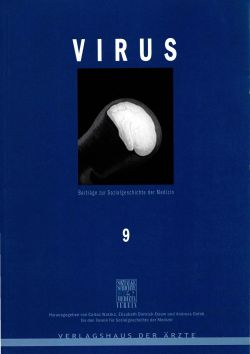
VIRUS Band 9, pp. 043-068, 2020/08/04

The article asks how health aspects surfaced in newspapers at the end of the eighteenthcentury. Michael Hermann Ambros’ Grazer Bauernzeitung (Peasants’ Newspaper)(1786–1796, entirely preserved: 1791f., 1794–1796) served as primary source. At thebeginning of the 1790s, it regularly contained articles on preventive measures, especiallyfeaturing dietetic advice. Child care and first aid could also be identified as focuses. Toa lesser extent, the editor included simple as well as secure prescriptions. Principally, theusually anonymous authors recommended to consult professional accredited healers.These specialists, and in particular the cited internationally renowned authorities, providedsources of the distributed knowledge. The contributors interpreted health in physical,psychic as well as social terms. Concepts of humoral and neural pathology dominatedthe writers’ background. Details linked health to facets of economy, religion,natural history, morals and beauty. The style was forthright, beside instructive textsnarratives played a significant role. According to the newspaper’s nature, the contributionsgenerally represented up to date and practical tips to remain or, respectively, becomehealthy. To a certain extent this ephemeral character led to conflicting statements.Moreover, regulations and employment advertisements of local, regional and centralauthorities showed the official will to control public health issues. Welfare institutionsalso published accounts of their achievements. Ambros himself had to display the sameextent of transparency when he gathered donations not only from Styrian compatriotsbut also from non-locals. Governmental agencies not only approved these efforts, butalso accredited healers and health-related merchandise. Permissions served as additionalrecommendations apart from qualities and quantities of services or, respectively, commodities.Some announcements, however, which did not meet all official criteria andwhere printed and publicly disseminated nevertheless, demonstrated the power of marketforces and marketing. Commercial advertisements for beverages and elixirs couldeven contradict the standards which were set in the informative articles. Demands inmarriage advertisements and attempts to seek healthy ways for intellectual as well asphysical child education indicated a rudimentary health consciousness at least amongthe upper strata of society. On the other hand, real estate advertisements most clearlyreflected the gap between enlightened vision and reality in this field. Of course, theseobservations will have to be supplemented with further evidence. On the whole, the newspaper’s position oscillated between popular education and marketing. These partlyconnected contexts deserve to be considered in further detail. Especially long-livednewspapers should be analysed and might illuminate historical change.
Keywords: Graz; Austria; Habsburg Monarchy; Enlightenment; Eighteenth Century; Popularisation; Transfer of Knowledge; Public Health; Charity; Gender; Children; Health Staff; Healthcare Industry; Health Consciousness; Newspaper; Marketing.